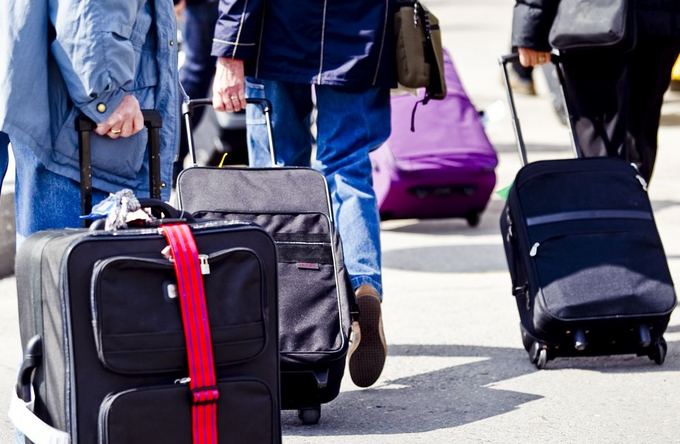Armenia: face to face with demographic crisis

By Nazrin Gadimova
Growing migration has become one of the reasons for the sharp decline in the number of population in Armenia. The residents of the country and a large diaspora accuse the government of failing to create the necessary conditions for living.
Poverty, corruption, economic difficulties, social vulnerability, external debt and destruction - these are the main reasons that force people to leave their homes. In fact, labor migration is a worldwide practice for survival.
What is bad in this situation the government has no intention or interest to improve the situation. The incumbent regime prefers to retain its power not caring of collapse of economy or full desertification of the country.
Most of the Armenian population left their homeland looking for well-paid job or for job in general. The Armenian Times Newspaper reports that the local large companies discharged about 1,000 people monthly. Dire economic situation has forced companies to cut costs, the source said.
The country has not yet published an official data on changes in the number of employees in the last quarter of last year. However, monitoring of large taxpayers, published by country’s Finance Ministry, show that number of employees at 520 large enterprises decreased by 3,600 people last year, the newspaper reported.
Former chairman of the Armenian National Bank Bagrat Asatryan, in turn, believes that oligarchs' presence in the Armenian economy would only contribute to an outflow of able-bodied and skilled workers.
All young leave, old people die... government remains
Demographer Ruben Yeganyan believes that the Armenian population would be 4.3 million instead of current 2.8 million if migration was not high.
“Since 1991, we have ‘lost’ 1.5 million people,” he said. “Following the latest census, the number of our resident population is of 3.2 million people, while the existing population is of 2.8 million.”
Over the next 50 years, the population may decrease by 1.5 million people, Yeganyan added.
For the first time in nearly 40 years, the population of Armenia fell below the level of 3 million according to the Armenian Statistics Agency. In 2015, the country’s population decreased by 12,000 people, while during the last five years it decreased by 35,000 people, and since gaining independence in 1991 - by 634,700 people. Thus, based on the 2011 census, 2.9 million people live in the country as of January 1, 2016.
Yeganyan said migration in Armenia has become an endless process since the 1990s, adding that the country suffers from a ‘chronic disease’ that causes emigration.
He said the phenomenon of emigration is systemic due to Armenia’s political, economic, social, moral and psychological state. Demographer said that the problem of immigration will not be solved if to eliminate one of these reasons. Thus, the whole system should be improved.
Yeganyan believes that the population can be increased in two ways – by increasing the birth rate and ‘importing’ people.
State officials are not very concerned about this phenomenon. The first ten years Armenia’s authorities simply denied the existence of migration, and when they finally recognized this fact, the country has left a million people.
Thus, it was easier for the Armenian government to accept the fact that its citizens leave the country, rather than to create new jobs. Moreover, Armenian migrants send financial help to their compatriots who remain in Armenia. Following the latest data from the World Bank, this figure amounts to almost $2 billion per year - a figure commensurate to the state budget of Armenia.
Probably it is difficult for the Armenian government to reject this source of revenue that relieves tension in the local society.
Where they leave Armenia for?
Armenian sociologist Gevort Pogosyan said 80 percent of the Armenians leave for the Russian Federation, 15 percent prefer European countries, while five percent choose the U.S..
“In the early 1990s, when there was a war in Nagorno-Karabakh, Armenia experienced the energy crisis; people were able to use electric light for two hours a day in the best – many left because of difficult socio-economic situation,” Pogosyan added.
The second period of the outflow was recorded at the beginning of the 2000s.
The vast majority of Armenians are leaving because they cannot find a job in their native land, and if they do, then the wages are so low that they cannot provide the necessities for themselves and relatives, Pogosyan believes.
Following the results of an appropriate survey, almost 32 percent of respondents are ready to leave because of lack of work, 30 percent - due to hopelessness, 20 percent - because of the lack of justice, and 17 percent - due to lack of livelihood.
Almost 52, 5 percent of respondents said they want their children to live abroad.
“There is high level of corruption in the country; people are dissatisfied with the courts. They are leaving because they cannot get legal solutions to their problems, maybe even elementary. They are forced to deal with corruption, bureaucracy, bribery. All these act as factors ‘ejecting’ people from the country,” the sociologist noted.
Furthermore, the survey included a social study on the interdependence of happiness, patriotism and migration. Exceptional majorities of Yerevan residents - more than 82 percent consider themselves true patriots, while the vast majority - 69 percent, consider themselves happy.
It may sound ironic, but patriotism and happiness do not prevent from desire to leave Armenia.
Thus, most happy Yerevan residents as well as half the citizens who consider themselves true patriots intend to leave the country.
--
Nazrin Gadimova is AzerNews’ staff journalist, follow her on Twitter: @NazrinGadimova
Follow us on Twitter @AzerNewsAz
